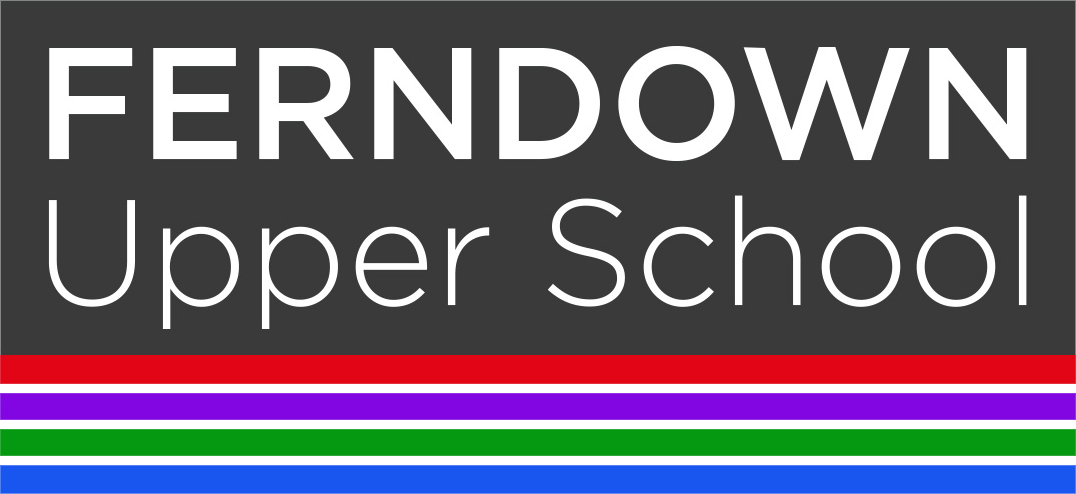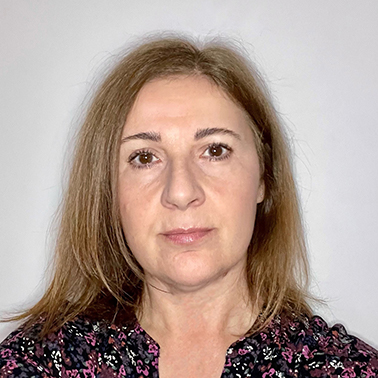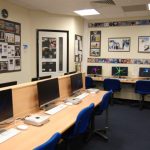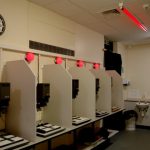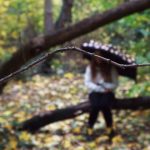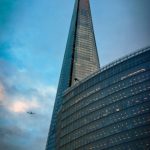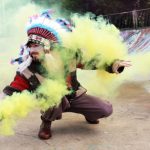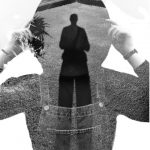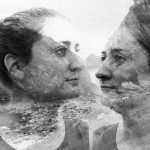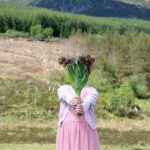Welcome to Photography
The Ferndown Upper School Photography Department is a friendly and engaging place where students can express themselves creatively in a technically challenging and highly rewarding medium. Those who are inclined towards science and maths often enjoy the technical dimensions; while for those who struggle to draw, photography provides a chance to be visually creative.
We find that our students tend to like learning practical skills. Smart phones have “de-skilled” photography, but our students learn to focus ‘analogue’ 35mm SLR cameras manually, use lighting and tripods, load film and develop their own dark room prints. Subjects like photography have immense value for teenagers as a balance for other parts of the curriculum where words and numbers count so highly. Photography is where art and science meet, so it can help students to think outside subject confines.
Photography is universal and many of us use it daily. Kodak once told consumers to “always carry a camera”. Now teenagers carry their smart phone at all times. Studying Photography at Ferndown helps students broaden their horizons; our culture of constant selfies and YouTube uploads has its dangers: safeguarding risks, egocentrism, over-sharing and the over-documentation of events inhibiting our ability to remember them. Learning photography can counteract these risks, as students learn to appreciate the merits of being behind the camera instead of always in front of it.
Meet The Photography Department Staff
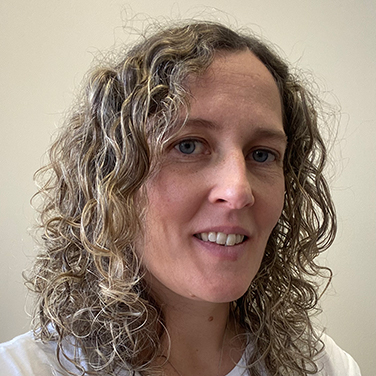
Ms. L. Wood
Photography Teacher
Exam Board – AQA Art and Design (Photography)
At Ferndown Upper School Photography is a GCSE and A Level option subject. Year 9 students who opt for Photography GCSE will start their course in the summer term of Year 9 with an induction project covering both traditional dark room photography practice and digital image manipulation/enhancement using Photoshop. Year 9 Art lessons will include aspects of photography – by way of a brief introduction to the course – and will include photography ‘taster’ sessions in the dark rooms.
To provide a broad range of practical experience for our students, we have two purpose built darkrooms with fifteen photographic enlargers in each, as well as a suite of Apple Mac computers for our students to further extend their working knowledge of Adobe Photoshop CC. This also helps broaden their ICT knowledge as they become accustomed to using Mas OS alongside their existing knowledge of Windows systems.
Students take photographs using traditional 35mm black and white film on SLR cameras, they then develop the negatives and produce dark room prints. Students also explore camera-less darkroom photography, including pinhole cameras and photogram techniques. They also learn how to use digital cameras correctly, to take effective photographs. At GCSE students are expected to have their own modest digital cameras and – ideally – access to an old 35mm SLR. (These can be bought second-hand, very reasonably from a range of sources, or borrowed from relatives). A level students ideally need a DSLR to be able to produce work of a sufficiently high quality for the course.
At GCSE, students complete three coursework projects, covering a range of genres. These are ‘Identity’ (portraits), ‘Spaces’ (landscape / environments) and ‘Text and Image’ (conceptual fine art photographic imagery). In the spring term of Year 11, students complete a three month externally set exam project, after choosing from a list of topics set by the AQA exam board. GCSE students then sit a 10 hour practical exam – carried out over two days – in both the Mac suite and darkrooms. There is therefore no final written exam in this subject.
Studying photography helps students develop their ability to communicate through expressive, experimental and narrative images. It builds understanding of the basic concepts of visual language and enable them to learn a wide range of photographic processes and techniques. It also allows them to look at the world around them more critically and encourages them to explore the work of other photographers. In addition, photography students learn how to analyse.
Curriculum Content of each academic year
Year 9 | |
Year 9 Photography | Content |
KS3 National Curriculum
NB there will no longer be formal Year 9 photography lessons from Sept 2021 Photography will be incorporated into Year 9 Art SOWs instead |
Year 9 will start their GCSE photography option in May/June and will study the following: 1) Darkroom induction project (photograms, pinhole cameras, first 35mm film and darkroom practice 2) ‘Identity’ Coursework Project (An exploration of concepts of human identity portrayed visually) · Analysis of contextual sources using specialist vocabulary · Practical digital/35mm film responses to contextual sources · Further development of Adobe Photoshop skills in the Mac Suite (Plus learning to use Mac OS) |
How its assessed: | AQA GCSE assessment criteria Coursework Portfolio (60% of the GCSE grade) |
Year 10 | |
Course/ Exam Board | Content |
AQA GCSE Art & Design (Photography) | 1)Completion of ‘Identity Project’ (if necessary) 2) ‘Spaces’ coursework Project (An exploration of different environments and the way they are viewed/experienced ) *Hidden Spaces * Evidence of Human Presence *Fantasy Landscapes *Leading Lines
· Analysis of contextual sources using specialist vocabulary · Practical digital/35mm film responses to contextual sources · Further development of Adobe Photoshop skills in the Mac Suite (Plus learning to use Mac OS) and extended dark room practice 3) Start of Year 11 Text and Image – Final Coursework Project (An exploration of the conceptual use of text with images – and graphic design) · Inner Voice · Narrative Photography · Music CD packaging design
|
How its assessed: | AQA GCSE assessment criteria Coursework Portfolio (60% of the GCSE grade)
|
Year 11 | |
Course/ Exam Board | Content |
AQA GCSE Art & Design (Photography) | 1) Year 11 Text and Image – Final Coursework Project (An exploration of the conceptual use of text with images – and graphic design) · Inner Voice · Narrative Photography · Music CD packaging design
2) AQA Externally Set Exam Project (From Jan – March in Year 11) 40% GCSE grade |
How its assessed: | Coursework – 60% final GCSE grade Externally Set Exam Project – 40% final GCSE grade |
Year 12 | |
Course/ Exam Board | Content |
AQA GCE A Level Art & Design (Photography) | Autumn Term – Advanced photographic practice 3 modules: (Year 12 coursework 35%) · Rule of thirds vs golden ratio · Depth of field (Darkroom practice) · Unexpected perspectives
Spring Term – Advanced photographic practice Module 4 ‘Identity’ (extended module) (Year 12 coursework 25%)
Spring – summer term (Feb – May) (40% Year 12 grade) Year 12 exam project (A level past paper) – concluding with Year 12 ‘continuation’ practical exam in June. |
How its assessed: | AQA assessment criteria – 60% coursework portfolio, 40% end of Year 12 ’ continuation’ exam |
Year 13 | |
Course/ Exam Board | Content |
AQA GCE A Level Art & Design (Photography) | 1) Personal Investigation Coursework Project – 60% of the A level grade. A self-identified extended coursework project to produce the personal coursework portfolio 2) Externally Set AQA exam project (Feb – May) 40% of the A level grade – culminating in a 15 hour practical exam in May to produce final responses. |
How its assessed: | AQA assessment criteria – 60% coursework portfolio, 40% end of Year 12 ’ continuation’ exam |
Careers In Photography
As a photography student, you will have gained skills highly valued by employers in the art and design careers sectors, such as creativity, a good eye for effective composition, a strong visual awareness and a competent technical knowledge of Adobe Photoshop on Mac OS. Besides professional photography, careers directly linked to photography studies include: graphic design, media/TV/film production, animation, advertising, photojournalism and digital marketing.
Labour Market Information – LMI
It is really useful to look at the labour market when considering a career related to photography. Many sectors related to photography are areas of growth in terms of employment opportunities. For example within the photography, audio visual, film production and graphic design sectors, the workforce is projected to grow by 1.9% over the period to 2027, creating 1900 jobs. In the same period, 58.5% of the workforce is projected to retire, creating 59,800 job openings.
The LMI for All portal provides high quality, reliable LMI information – see link below: https://www.lmiforall.org.uk/
Pathways Example Post 16 Routes – Level 3 A Level / BTEC
- A-Level Photography
- BTEC Foundation Art (Year 14) (Equivalent to 3 A levels)
Pathways Example Post 16 – Apprenticeship Ideas
- Photography Assistant – Photography assistants help photographers plan, set up, and complete photo sessions in their studios or at other worksites. This entry-level role involves helping customers, preparing photos for distribution, configuring and operating photo equipment, and offering creative and technical advice to the photographer.
- Digital Marketing – If you’re interested in social media, product photography, or marketing
- Fashion Studio Assistant
- Apprentice Customer Service, Admin and Marketing Assistant – You might be responsible for answering emails and updating the customer database with any contact that has been made. You may be calling customers and logging all customer related activities in the database. The marketing side of the role involves social media promotions, video editing, photography work, and networking with other businesses.
Pathways Example Post 18 – University degrees
There are lots of varied photography degree courses (Usually BA Hons Batchelor of Arts honours degrees), as well as courses that combine photography with other subjects.
These include: Photography, commercial photography, fashion photography, documentary photography, marine and natural history photography, fashion branding and communication, photography and moving Image, film and visual effects technology (BSc), Specialist Hair and Media Make-up. Animation, Film and Screen Studies and Graphic Design & Photography.
For more information visit the UCAS Undergraduate Search page for courses involving photography – using this link.
